Most people think a fever is just a sign you’re coming down with a cold. But a fever isn’t the illness itself-it’s your body fighting something. When your temperature hits 100.4°F (38°C) or higher, your brain is turning up the heat on germs. That’s normal. But when does that normal response become dangerous? Knowing the difference can keep you out of the ER-or save your life.
What Counts as a Fever?
There’s no single number that fits everyone. Some people run naturally cooler, others warmer. But medically, 100.4°F (38°C) is the standard threshold. Below that? Probably just a slight rise from exercise, a hot shower, or being in a warm room. Wait 30 minutes, rest, then check again. If it’s still up, then it’s real.
Fevers are broken into tiers:
- Low-grade: 99.1°F to 100.4°F (37.3°C to 38.0°C)
- Moderate: 100.6°F to 102.2°F (38.1°C to 39.0°C)
- High-grade: 102.4°F to 105.8°F (39.1°C to 41°C)
Most viral infections-flu, colds, even COVID-19-cause moderate fevers that peak and fade in 2 to 3 days. That’s your body doing its job. But if it climbs past 103°F (39.4°C), or doesn’t budge after 48 hours, it’s time to pay attention.
When to Call Your Doctor
Not every fever needs an ER visit. But you shouldn’t wait it out blindly. Here’s when to pick up the phone:
- Your fever hits 103°F (39.4°C) or higher and doesn’t drop with medicine
- It lasts longer than 72 hours, even if it’s low-grade
- You’re over 65, or you have a weakened immune system (from cancer treatment, HIV, steroids, or organ transplant)
- Your fever keeps coming back-spiking for days, then dropping, then spiking again
People with chronic conditions like diabetes, COPD, heart disease, or sickle cell anemia are at higher risk. Their bodies can’t handle the stress of fever the same way. For them, even a 101°F (38.3°C) fever is a red flag. Don’t wait. Call your doctor.
When to Go to the ER
Some symptoms don’t wait. If you have a fever and any of these, head to the emergency room right away:
- Confusion, trouble staying awake, or seizures
- Difficulty breathing or blue lips or tongue
- Stiff neck with sensitivity to light
- Severe headache you’ve never felt before
- Loss of consciousness
- Severe abdominal pain
- Painful urination with fever
- A rash that looks like bruising or doesn’t fade when you press on it
These aren’t just “bad symptoms.” They’re signs of serious infections like meningitis, sepsis, or toxic shock syndrome. A fever alone might be a virus. But a fever with a rash and stiff neck? That’s not a virus. That’s an emergency.
And if your temperature hits 105°F (40.6°C) or higher, go to the ER-no waiting, no second thoughts. At that point, your body is at risk of protein damage and neurological harm. It’s not a number to test. It’s a signal to act.
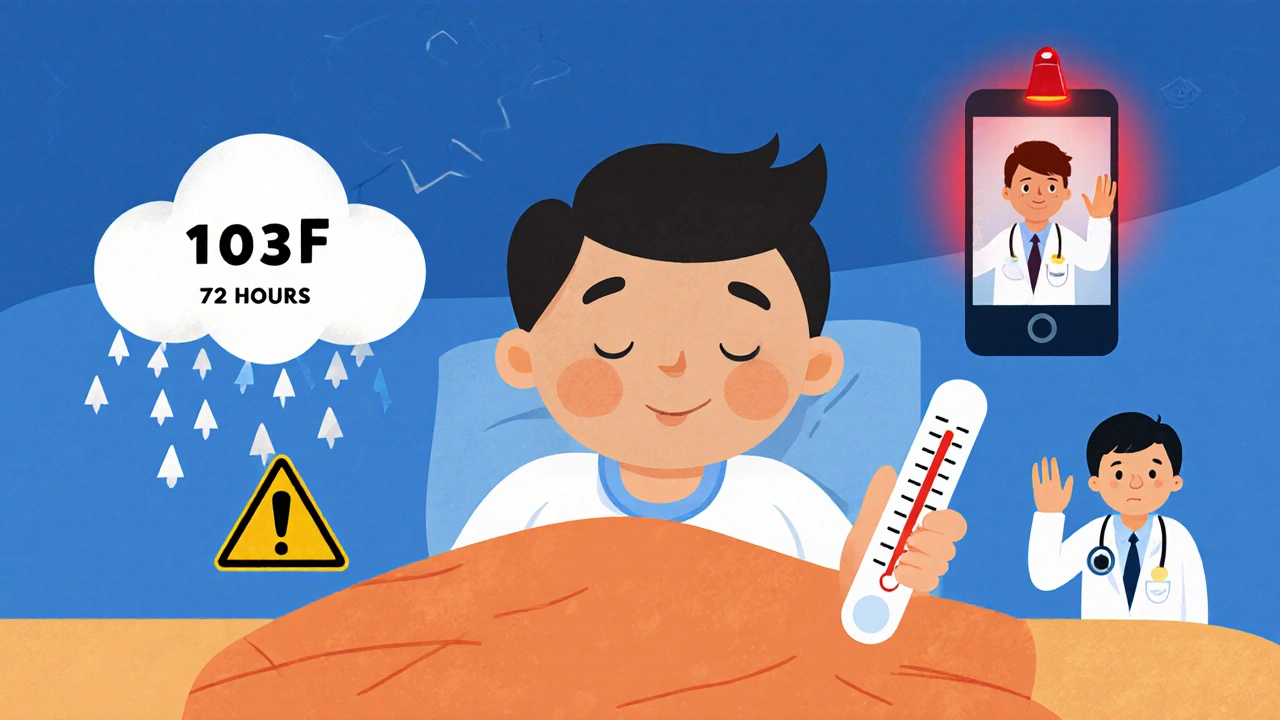
Why Duration Matters More Than the Number
Many people fixate on the thermometer. But doctors care more about how long the fever lasts. Why? Because 90% of viral fevers clear up within 72 hours. If yours is still going after three days, it’s likely not just a cold. It could be bacterial-like sinusitis, pneumonia, or a UTI-that needs antibiotics.
A 2023 study by the Society of Hospital Medicine found that people who waited more than 96 hours to get help were over twice as likely to need hospitalization. Delaying care doesn’t make you tough. It makes complications more likely.
And recurrent fevers-coming and going for a week or more-are a big red flag. Even if they’re mild, they can signal something deeper: an abscess, an autoimmune flare, or even certain cancers. Don’t brush it off as “just a stubborn bug.”
Who’s at Higher Risk?
Not everyone gets the same advice. If you’re over 65, or your immune system is compromised, your threshold drops. For you, 101°F (38.3°C) is the new 103°F.
Why? Because your body doesn’t fight back as hard. A fever that seems “mild” to a healthy person might be the only sign your body is losing a battle with something serious-like pneumonia or an infected joint. The CDC reported in early 2023 that 18% of preventable hospitalizations during the pandemic happened because vulnerable people waited too long to seek help.
Same goes for people on immunosuppressants, chemotherapy, or long-term steroids. Even a small fever can mean your body can’t control an infection anymore. Don’t assume it’s “just a cold.”
How to Measure Fever Correctly
Not all thermometers are equal. For adults, the most accurate reading comes from a digital oral thermometer. Place it under your tongue, close your mouth, and wait for the beep.
Forehead (temporal artery) thermometers are convenient but can be off by a degree or two-especially if you’ve just come in from the cold or just exercised. If you use one and get a high reading, double-check with an oral thermometer after resting for 30 minutes.
And skip the old-school glass thermometers. They’re slow, fragile, and risky if broken. Also, rectal thermometers? Those are for babies. Not adults.
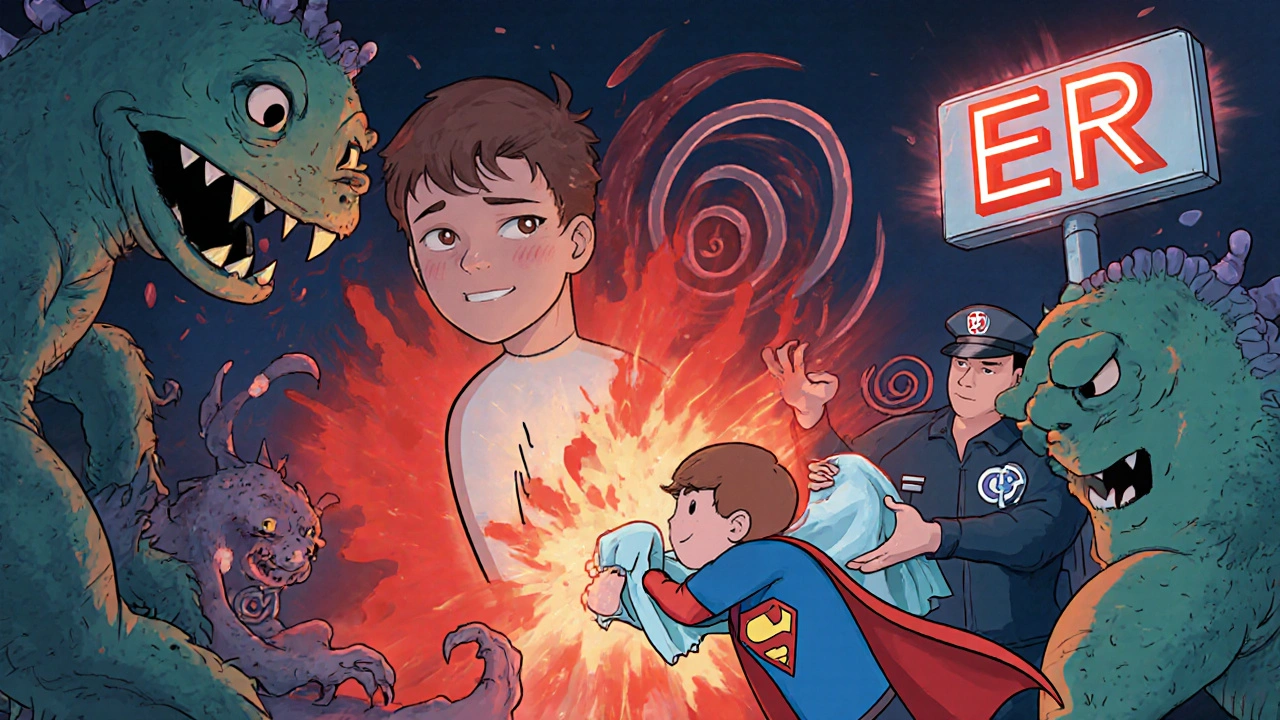
What Not to Do
There are a lot of myths out there.
- Don’t bundle up. Covering yourself in blankets won’t “sweat out” the fever. It can make it worse by trapping heat.
- Don’t wait until you’re shivering. Chills mean your body is still ramping up the fever. Don’t wait for it to peak to take medicine.
- Don’t rely on touch. Your forehead might feel hot, but that’s not reliable. Use a thermometer.
- Don’t ignore a fever just because you feel “fine.” Some people with serious infections feel surprisingly okay-until they suddenly aren’t.
And please, don’t wait until your fever hits 104°F to call for help. A 2023 Kaiser Permanente survey found that 42% of adults did exactly that. By then, it’s often too late to avoid complications.
What You Can Do at Home
For mild fevers under 102°F (38.9°C) with no other symptoms, rest and fluids are your best tools.
- Drink water, broth, or electrolyte drinks. Dehydration makes fevers worse.
- Take acetaminophen or ibuprofen if you’re uncomfortable. They don’t cure the fever-they just make you feel better while your body fights.
- Wear light clothing. Keep the room cool.
- Don’t force yourself to eat. But don’t go without fluids.
And if you’re unsure? Use telehealth. Services like HMH 24/7 virtual care let you talk to a doctor from your couch. In 2023, over 60% of non-emergency fever cases were handled remotely-saving time, stress, and trips to crowded clinics.
Bottom Line
A fever isn’t something to fear. It’s a signal. But like any signal, you need to know what it’s telling you.
If your fever is under 103°F and fading in 2-3 days, you’re probably fine. Rest, hydrate, monitor.
If it’s above 103°F, lasts more than 72 hours, or comes with confusion, rash, trouble breathing, or stiff neck-don’t wait. Call your doctor or go to the ER.
And if you’re over 65 or have a chronic illness? Don’t wait for it to get worse. At 101°F, it’s already time to act.
Fevers are common. But complications aren’t. Knowing when to seek help isn’t overcautious-it’s smart.
Is a fever of 101°F dangerous in adults?
For a healthy adult, a 101°F fever is usually not dangerous and often indicates a mild viral infection. But if you’re over 65, have a weakened immune system, or have chronic conditions like diabetes or heart disease, 101°F is a warning sign. In these cases, you should contact your doctor right away-even if you feel fine.
How long should I wait before seeing a doctor for a fever?
If your fever lasts longer than 72 hours, it’s time to get checked out. Most viral infections resolve within that window. If it’s still there after three days, it could be bacterial or something more serious. Don’t wait until you’re worse-call your doctor on day three.
Can a fever cause brain damage?
A fever caused by infection rarely causes brain damage. But if your temperature climbs above 105°F (40.6°C), your body’s proteins can start to break down, which can lead to neurological damage. That’s why a fever this high is considered a medical emergency. It’s not the fever itself-it’s how high it goes and how long it stays there.
Should I take medicine to bring down a fever?
You don’t have to treat a fever unless you’re uncomfortable. Medicines like acetaminophen or ibuprofen help with pain and discomfort, but they don’t speed up recovery. Your body needs the fever to fight infection. Only take them if you’re having trouble sleeping, eating, or staying hydrated.
What’s the best way to take my temperature?
For adults, the most accurate method is using a digital oral thermometer. Place it under your tongue, keep your mouth closed, and wait for the beep. Forehead thermometers are convenient but less precise-especially after exercise or being in a hot environment. Always wait 30 minutes after physical activity or a hot shower before checking.
Is it safe to use a fever patch or cold wrap?
Fever patches and cold wraps may feel soothing, but they don’t lower your core temperature. They only cool the skin surface, which can trick your body into making the fever worse. The best approach is rest, fluids, and medication if needed-not external cooling tricks.
Can stress or anxiety cause a fever?
Stress alone doesn’t cause a true fever. But chronic stress can weaken your immune system, making you more likely to catch an infection that does. If you’re feeling unwell and stressed, don’t assume it’s just anxiety-check your temperature. A real fever needs medical attention, no matter the cause.
What should I do if I have a fever and no other symptoms?
If your only symptom is a fever under 102°F and you feel fine otherwise, rest and hydrate for 24-48 hours. But if it climbs above 103°F or lasts beyond 72 hours-even without other symptoms-call your doctor. Sometimes, the first sign of pneumonia, a UTI, or even a hidden abscess is just a fever.
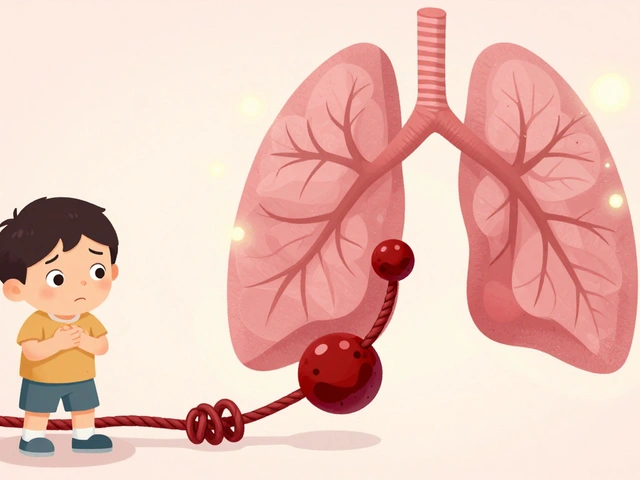

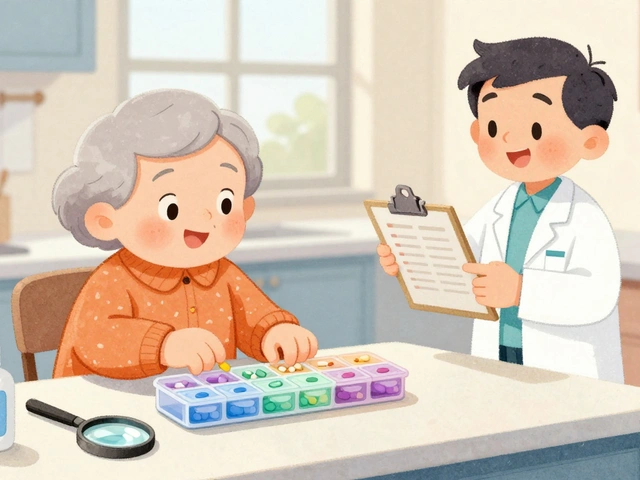

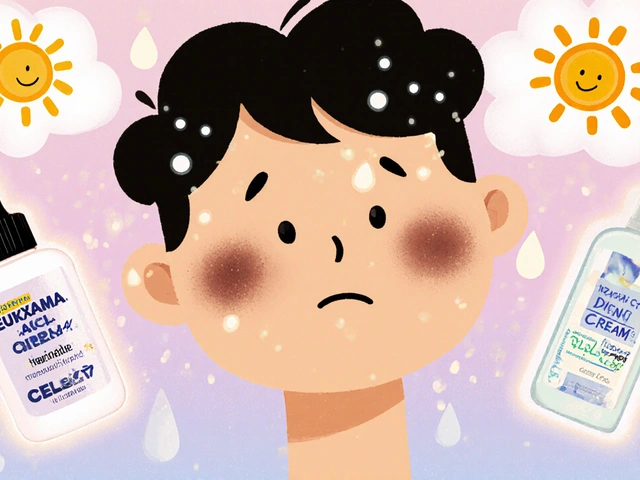

16 Comments
Finally, someone broke this down without the medical jargon overload. I used to panic every time my temp hit 100.5, thinking I was dying. Turns out, I just needed sleep and water. Now I check my thermometer after resting for 30 minutes like they said-no more false alarms from walking in from the cold.
Also, the part about not bundling up? Huge. I used to wrap myself in five blankets like I was in a snowstorm. My fever just got worse. Now I wear shorts and a t-shirt, drink coconut water, and chill. It’s weird how simple it is when you stop fighting your body.
And yes, 103°F is the line. I had a friend who waited until 104.5 because she didn’t want to ‘bother’ the doctor. She ended up in the ER with pneumonia. Don’t be that person.
They’re lying about the fever patches. I know someone who works in a lab that makes those. They’re just placebo with gel. The real danger? The CDC and pharma companies pushing meds like Tylenol like it’s a cure. Your body knows what to do. Let it run. The real threat is overmedicating and hiding symptoms until it’s too late.
Also, why no mention of 5G or EMF exposure causing low-grade fevers? I’ve seen it in my neighborhood. People get 99.8°F for weeks and think it’s ‘just stress.’ It’s not. It’s the towers.
Wow. So much of this is just common sense dressed up like a medical pamphlet. ‘Don’t bundle up’? Really? Who thought that was a novel idea?
And ‘use an oral thermometer’? Who uses a forehead one anymore? I mean, this reads like a 2008 blog post repackaged by a marketing intern. The study citations are vague-‘Society of Hospital Medicine 2023’? No link. No DOI. Lazy.
Also, why is 101°F a red flag for the elderly but not for people on chemo? That’s inconsistent. And why no mention of sepsis biomarkers? This is basic triage stuff. You’re not teaching anything here-you’re just reassuring people who already know.
bro i had a fever of 104 and just drank gatorade and slept it off. no doctor. no er. just me and my fan.
they say go to er at 105 but i did it at 104.5 and was fine. they overhype this stuff. i think its all just fear marketing so you buy more meds.
also why do they hate glass thermometers? they work fine. just dont break em. lol
and fever patches? they feel nice. i use em. who cares if they dont lower core temp? i feel better. thats what matters.
stop scaring people. its just a fever. chill.
This is so helpful. I’ve been caring for my mom since her hip surgery, and she’s 72. She got a 101.2 fever last week and didn’t say anything because she thought it was ‘just tired.’ I checked her temp and called her PCP right away. They found a UTI before it turned into anything worse.
Thank you for saying that 101°F is a red flag for older adults. I wish more people knew that. It’s not about being dramatic-it’s about catching it early. I’m sharing this with my whole family.
Also, the telehealth tip? Perfect. We used it. Got a prescription in 20 minutes. No waiting room. No exposure to sick people. Yes.
What’s the evidence that fever patches don’t lower core temperature? I’ve seen studies that show mild skin cooling can trigger vasodilation and increase heat dissipation. Are those studies wrong? Or is this just anecdotal?
Also, if someone has a fever and no other symptoms, how often do you see hidden abscesses? Is that common enough to warrant calling a doctor after 72 hours, or is that overkill for most people?
I’m not trying to argue-I just want to understand the data behind the advice.
Correction: The threshold for fever is not universally 100.4°F. The American Academy of Pediatrics and CDC define fever as ≥100.4°F (38°C) rectally in infants, but for adults, the standard is ≥100.0°F (37.8°C) orally. The article misstates this.
Also, the claim that ‘90% of viral fevers clear in 72 hours’ is not evidence-based without a citation. Please provide the source. Otherwise, this is anecdotal guidance disguised as medical fact.
And ‘rectal thermometers are for babies’? That’s outdated. In immunocompromised adults, rectal temps are still the gold standard for accuracy. Don’t dismiss it without context.
Let me offer a broader perspective: fever is not merely a symptom-it is a regulated physiological response orchestrated by the hypothalamus in response to pyrogens, both exogenous (like bacterial LPS) and endogenous (like IL-1, TNF-alpha). The body elevates core temperature to inhibit pathogen replication, enhance neutrophil mobility, and accelerate tissue repair.
Therefore, suppressing fever with NSAIDs may inadvertently prolong illness by interfering with these natural defense mechanisms. That said, the discomfort caused by fever can impair hydration, sleep, and nutritional intake-critical factors in recovery.
Thus, the goal should not be to eliminate fever, but to preserve homeostasis. For the elderly, immunocompromised, or those with cardiac or pulmonary comorbidities, even modest temperature elevation imposes significant metabolic strain. Their threshold for intervention must be lower-not because the fever is inherently more dangerous, but because their physiological reserve is diminished.
And yes, a temperature of 105°F does carry risk of denaturing proteins, particularly in the central nervous system. This is not theoretical. Case reports exist of hyperpyrexia-induced encephalopathy in otherwise healthy young adults who delayed care.
Education, not fear, is the antidote. This article, despite its flaws, does a commendable job of translating complex physiology into actionable advice. Thank you.
They’re hiding something. Why is there no mention of Lyme disease? I had a fever that came and went for 10 days. No rash. No fatigue. Just a 101.5°F spike every night. Doctors said ‘viral.’ I got tested six months later-positive for Lyme. They don’t tell you this because testing is expensive and they don’t want to scare you.
And why do they always say ‘if you’re over 65’? What about people with autoimmune disorders? I have lupus. My fever at 99.9°F means I’m having a flare. No one ever says that.
This article is too clean. Too safe. It’s designed to make people feel calm. But real illness doesn’t follow neat charts. It hides. And by the time you see it, it’s too late.
This is exactly the kind of clear, evidence-based guidance we need more of. I’m a nurse, and I see patients every week who wait until they’re delirious before seeking help. The myth that ‘fevers are good and should be left alone’ is dangerous.
Especially for parents and caregivers. Many think if the person isn’t screaming or crying, they’re fine. But silent deterioration is real. A 101°F fever in a diabetic with foot numbness? That’s a foot infection waiting to become osteomyelitis.
Also, thank you for calling out the fever patch myth. I’ve seen patients tape ice packs to their foreheads and then wonder why they’re worse. It’s not helping-it’s misleading.
If you’re reading this and you’re caring for someone vulnerable: trust your gut. If something feels off, call. You’re not overreacting. You’re being responsible.
I used to think fevers were the body’s way of saying ‘I’m fighting!’ and I’d let mine rage. Then I got sick during a heatwave and my temp hit 104. I didn’t feel bad at first-just kinda spaced out. Next thing I knew, I was on the floor. My roommate called 911.
Turns out, my brain was overheating. Not from the virus-from the heat trapping inside me. I had to be cooled down with IV fluids and ice packs.
Now I don’t wait. I take ibuprofen at 101.5. I don’t care if it ‘slows the fight.’ I care about keeping my brain working.
Fevers aren’t noble. They’re biology. And sometimes, biology needs a nudge.
103+ = er
3 days = doc
old or sick = 101 = call
done. easy.
I’m 32, healthy, and I got a 102.8 fever after a long flight. I didn’t feel sick-just tired. I waited 48 hours, then called my doctor. Turned out I had a kidney infection. No pain. No burning. Just fever.
So yeah, even if you feel fine, if it’s high or lasting, don’t ignore it. Your body might be screaming and you’re just too tired to hear it.
Also, thank you for saying not to bundle up. I used to do that and it made me feel worse. Light clothes, cool room, water. That’s it.
As someone from India, I’ve seen so many people here treat fever like a rite of passage. ‘Just drink warm water, eat khichdi, sleep under wool blankets.’ My aunt once wrapped her 80-year-old husband in three quilts because ‘he needs to sweat it out.’ He ended up in ICU with heat stroke.
This article is gold. We need more of this in rural clinics. People think fever = cold = medicine = cure. No. Fever is a signal. And if you ignore the signal, the house burns down.
Also, the part about telehealth? Yes. In our village, we have a WhatsApp group with a doctor who answers questions for free. We send photos of thermometers. It saves lives.
Thank you for writing this. I’m sharing it with my whole family.
My partner got a fever after a dental procedure. We didn’t think much of it-just 100.9. Two days later, he couldn’t open his mouth. Swelling. Fever at 103. ER. Abscess. Had to get surgery.
Don’t wait. Even if it’s ‘just’ 101, if it’s after a procedure or injury, call. Infection doesn’t always hurt right away.
Interesting. So the article says ‘don’t wait until 104’-but then ignores the fact that most ERs won’t even admit you for a fever unless you’re delirious or hypotensive. I’ve been turned away three times for 104.5 because ‘you’re not in distress.’
So the advice is good, but the system isn’t. You’re telling people to go to the ER, but the ER won’t treat you unless you’re dying. That’s the real problem.
And the ‘call your doctor’ advice? Good luck getting a same-day appointment. My PCP has a 3-week wait. So what am I supposed to do? Wait until I’m unconscious?